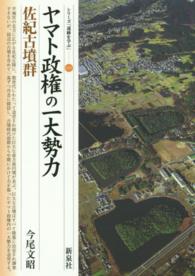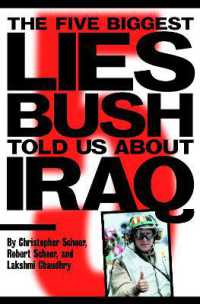Full Description
This groundbreaking volume brings together scholars of the art and archaeology of late antiquity (c. 200-1000), across cultures and regions reaching from India to Iberia, to discuss how objects can inform our understanding of religions. During this period major transformations are visible in the production of religious art and in the relationships between people and objects in religious contexts across the ancient world. These shifts in behaviour and formalising of iconographies are visible in art associated with numerous religious traditions including, but not limited to, Buddhism, Christianity, Hinduism, Islam, Judaism, Zoroastrianism, religions of the Roman Empire, and paganism in northern Europe. Studies of these religions and their material culture, however, have been shaped by Eurocentric and post-Reformation Christian frameworks that prioritised Scripture and minimised the capacity of images and objects to hold religious content. Despite recent steps to incorporate objects, much academic discourse, especially in comparative religion, remains stubbornly textual. This volume therefore seeks to explore the ramifications of placing objects first and foremost in the comparative study of religions in late antiquity, and to consider the potential for interdisciplinary conversation to reinvigorate the field.
Contents
Introduction (Jaś Elsner and Rachel Wood)
Chapter 1: The materiality of the divine: aniconism, iconoclasm, iconography (Salvatore Settis, with a response from Maria Lidova)
Chapter 2: Bodies, bases, and borders: framing the divine in Greco-Roman antiquity (Verity Platt, with a response from Dominic Dalglish)
Chapter 3: Kufa and Kells: the illuminated word as sign and presence in the 7th-9th centuries (Benjamin C. Tilghman and Umberto Bongianino, with an introduction by Katherine Cross)
Chapter 4: The Jewish image of God in late antiquity (Martin Goodman, with a response from Jaś Elsner and Hindy Najman)
Chapter 5: Empire and Faith: the heterotopian space of the Franks Casket (Catherine Karkov, with a response from Katherine Cross)
Chapter 6: Buddhapada: The Enlightened Being and the Limits of Representation at Amarāvatī (Jaś Elsner, with a response from Alice Casalini)
Chapter 7: From Serapis to Christ to the Caliph: faces as a re-appropriation of the past (Ivan Foletti and Katharina Meinecke, with an introduction by Nadia Ali)
Chapter 8: Uses of decorated silver plate in Imperial Rome and Sasanian Iran (Richard Hobbs, with a response from Rachel Wood)
Chapter 9: Material religion in comparative perspective: how different is BCE from CE? (Christoph Uehlinger, with a response from Stefanie Lenk)
Conclusion
Bibliography
Index








